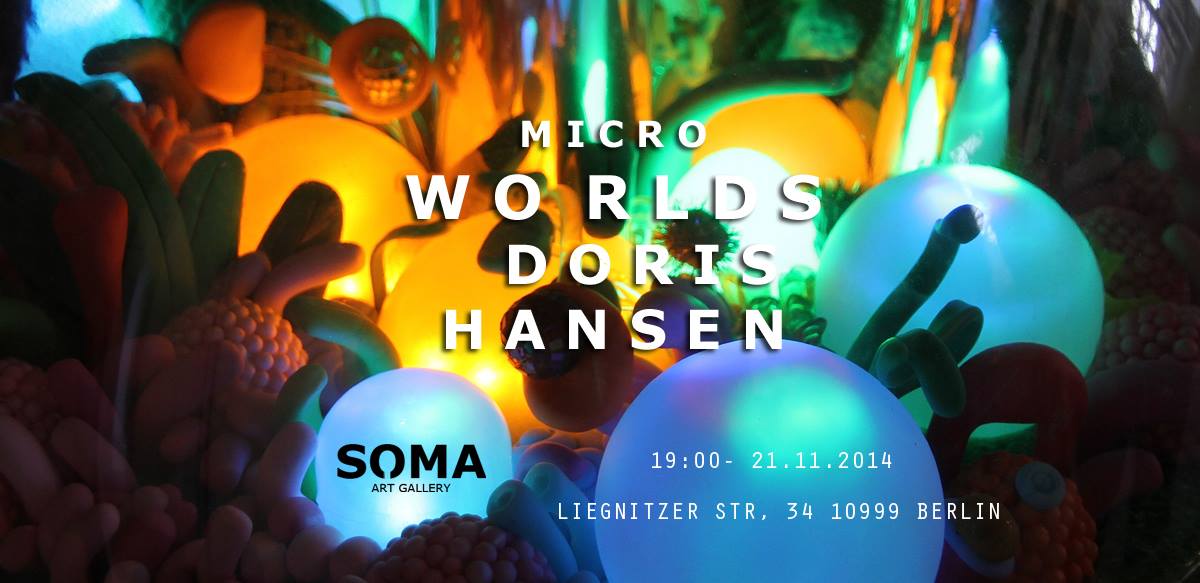
MICROWORLDS – DORIS HANSEN
Start: 19 Uhr
S0MA
liegnitzer str 34, 10999 Berlin
The swaying of the viewer – Doris Hansen’s microworlds All concepts and realizations of Berlin-based artist Doris Hansen rely on the meta-idea of microworlds. She gives them shape in installations, reliefs, objects, and drawings, which are extraterrestrial visions of our future.
The realizations are made of materials that are as far from nature as possible, like styrofoam, an invisible spatial skeleton covered by synthetic fabrics. In recent years the artist has incorporated scans of digitally colored pencil drawings and large reliefs into the microworlds. In current projects, Doris Hansen combines her characteristic highly tactile soft materials with optical elements: She increasingly experiments with LEDs casting changing artificial light and with worlds erected under acrylic glass covers like miniature hemispheres. The transparency of these object membranes as well as of the windows where Doris Hansen’s installations can regularly be seen particularly emphasize the difference between this other space and our own. The observer’s view through this membrane fits the idea of a space that will never fully disclose itself to us all too well, because it escapes our imagination and leads us back to the concrete materiality of the pieces.
Doris Hansen draws inspiration from microbiology, medieval world views, and especially comic books and science fiction from the 1950s to 1970s. So the microworlds can also be read as fictional worlds: We share Flash Gordon’s or Barbarella’s vision of the now from many decades ago, making us smile because everything has turned out so differently. However, they are also – and maybe above all – perfect worlds, not wanting to reveal, even downright disguising their manual production process as if they were not in fact elaborately handcrafted but industrially manufactured and machine-made.
Doris Hansen creates multicolored, attractive, queer worlds in which she accomplishes a deconstruction of the binary gender system, emphasized by her choice of materials and production technique: Styrofoam as a construction material attributed with masculinity is literally overlaid by colors, fabrics and floral motifs with feminine connotations, deconstructing the concept of male/female, homo/hetero as merely cultural and increasingly obsolete assignations: tertium datur. The microworlds’ plasticine inhabitants are genderless.
On a symbolic level, the microworlds are perceived as contradictory. The viewer feels attracted to their incredible material presence, but at the same his/her thoughts keep rebounding on the utopias referenced. We seem suspended in a precarious balance that starts to sway the longer we are exposed to the worlds, and which, in spite of – or maybe because of – the amazing aesthetics of artificiality, causes a feeling of uneasiness in us. Because what do these worlds refer to? They always refer to ourselves as well, pointing out empty spaces in our imagination, in our future.






